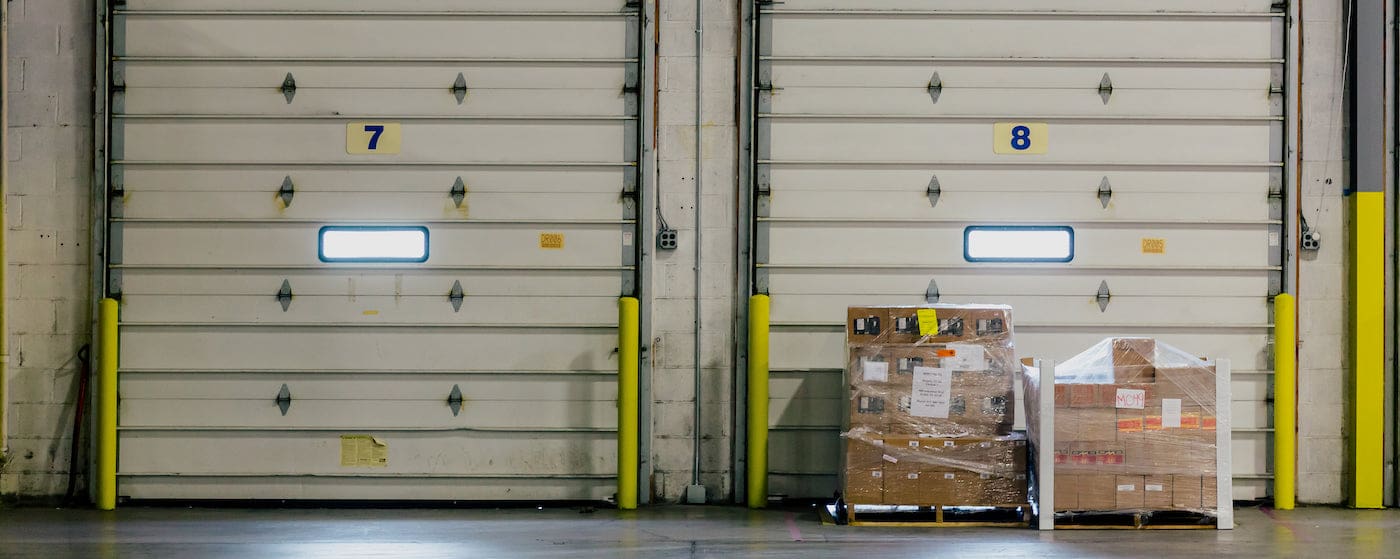Table of Contents
** Minutes
What to look for in a warehouse solution
The different types of warehousing solutions
How Australian warehousing works
What ShipBob customers are saying
How ShipBob’s fulfilment network & warehousing solutions help ecommerce businesses
The Australian ecommerce market is booming, with a predicted US revenue of $43,206.7 million ($64,465.95 AUD) by 2023. It’s currently the 13th largest ecommerce market and is expected to see a 16.8% increase this year.
If you’re an Australian business owner looking to expand, there are several things to consider when finding the right warehouse logistics solution for your business.
In this guide, we take a closer look at the different types of ecommerce warehousing solutions and how warehousing works in Australia.
What to look for in a warehouse solution
Understanding the best way to operate your warehouse can be overwhelming at first.
To help you get started, here are some things to consider when looking for the ideal warehousing solutions, including experience, social proof, and warehouse organisation.
Experience
How long the company has been in business can tell you a lot about whether they can offer the right warehousing solution for you.
Ideally, you want to look for a company that has been in business for a solid amount of time, thus gaining the necessary experience to offer quality service.
At the same time, experience must also come with a continuous investment in technology, such as implementing the latest in smart warehousing tools.
More importantly, their experience should be specific to your industry, so they have the facilities and knowledge to handle the type of goods you sell.
For example, ShipBob has been providing warehousing solutions to 5,500+ ecommerce businesses in a wide range of industries for close to a decade, and continue to implement new technology and processes, while also expanding their geographic footprint..
Organisation
Another factor to consider is how well-organised their warehouses are.
- What inventory storage and shelving systems are they using?
- Will these work for the type of products you want to store?
- Are they using modern inventory management systems to help with organisation?
These are important factors that will affect the efficiency of your warehousing operations and the safety of your inventory.
ShipBob’s warehouse management systems help to maintain high levels of efficiency and accuracy, with an order accuracy rate of 99.95% while 99.96% get shipped out on time.
Reviews
What are other business owners saying about them? Looking at customer reviews is the easiest way to tell whether the solution they offer is up to par and whether they live up to their claims.
Reviews and case studies help business owners feel more comfortable taking on a new partnership. Since it’s a big investment, it’s always a good idea to read reviews, or better yet, reach out to other business owners for their recommendations.
Distribution network
Depending on the size of your logistics operations, relying on a single location isn’t always enough to meet customer expectations around affordable shipping.
If you want to expand not only across Australia but also reach customers in other countries, it’s a good idea to look for a partner that offers an expansive distribution network.
This allows you to expand with ease and strategically store your inventory closer to where orders are coming in from.
For instance, ShipBob has a distributed network of global fulfilment centres, with two ShipBob locations in Australia and several others in the US, the UK, Canada, and Europe.
When orders can be shipped out from the closest fulfilment centre, you spend less on international shipping costs and reduce last-mile delivery times.
Additional services
To stay competitive, warehousing and storage is just one of the many services you’ll need.
Before choosing a warehousing provider, it’s a good idea to evaluate your business’s unique needs. For example, some warehouse solutions also offer beyond warehousing and picking and packing with solutions including:
- Picking and packing
- Real-time inventory tracking
- Returns management
- Ecommerce integrations partners
- Lot tracking
- SKU management
- Top shipping courier partnerships
Some providers also provide customisation solutions, such as kitting and assembly, plus the ability to use custom packaging, marketing inserts, and gift notes.
The different types of warehousing solutions
Once you understand what your business requires from a warehousing solution, you have an array of options to consider.
Here is an overview of the different types of warehousing solutions.
Public warehouse
These are facilities owned by the government and made available for rent to private sector companies.
Public warehouses are typically more affordable than owning your own warehouse. Plus, they come with lower risk as there’s no commitment of funds. This them a great option for ecommerce startups and small businesses.
However, you may not be able to get warehousing space as and when you need it since public warehouses tend to see a lot of usage, especially during peak seasons.
On top of this, most public warehouses won’t offer specialized or value-added services beyond offering storage space.
Private warehouse
These are facilities owned privately by the company to store their own goods.
Private warehouses are typically a good option for large retail corporations and wholesalers since they have the freedom to store large volumes of inventory for extended periods of time.
However, it requires capital investment, making them viable only for well-established businesses that can afford the high startup cost.
Distribution centres
These are specialized facilities where businesses can strategically store their inventory and ship out goods to their next location.
Distribution centres help to quickly move large quantities of products in a highly efficient manner. They also provide other value-added services including entire order fulfilment processes.
Ecommerce fulfilment centres
A fulfilment centre serves as a hub for all the logistics processes involved in getting a product to the end customer.
These types of facilities not only store inventory but also handle a significant portion of the ecommerce fulfilment process including processing orders, picking and packing, and shipping.
How Australian warehousing works
When looking for warehousing solutions in Australia, it’s important to be aware of laws, regulations, and other considerations that are specific to the market.
Let’s explore some of the key considerations specific to Australia.
Safety standards
Like all business operations, warehouses in Australia are bound by Work Health and Safety (WHS) laws, requiring them to maintain the health, safety, and welfare of warehouse staff.
Under this law, warehouses are obligated to provide their workers with a safe work environment and ensure safe machinery and structures.
This also involves ensuring the safe handling, use, and storage of any machinery, structures, or substances that are utilised in your warehousing operations.
Moreover, you must provide safe ways of working, which would also obligate you to provide workers with necessary information, training, instruction, and/or supervision.
In addition, workers must have access to adequate facilities and also closely monitor their health and conditions at the workplace. Beyond these basics, there may be additional WHS requirements specific to your state or territory.
Environmental regulations
Facilities are legally obligated to comply with certain environmental regulations put in place by the Australian government.
These regulations require facilities to ensure proper waste disposal, energy efficiency, and stormwater management to name a few.
Under these regulations, warehouses may need to lease green buildings, use energy-efficient equipment, reduce water waste, and appropriately manage hazardous waste.
Depending on the type of business activity, you may even require certain environmental licenses and permits. Make sure to check the environmental rules specific to your state or territory.
Geographic and climate considerations
It’s a well-known fact that Australia is a vast and sparsely populated country. This poses a number of logistical challenges for warehousing operations, with climate conditions being an important consideration on its own.
For example, rural areas can be difficult to access since they’re so far located from cities and tend to have rough terrain.
In this case, warehouses are strategically located to ensure easy access to all areas while being equipped with proper vehicles to allow for safe inventory transport.
Moreover, with temperatures being high to moderately high all year round, there’s a risk of damage for products that are sensitive to warmer weather.
Warehouses must take into consideration the need for proper temperature control while ensuring energy savings so that goods can safely be stored for extended periods of time.
What ShipBob customers are saying
With two fulfilment centres in Australia, ShipBob has made it possible for ecommerce businesses to expand to the Australian market.
This allows them to store their inventory closer to their customers, meaning their Australian customers don’t have to wait weeks to get their orders. Here’s what our customers have to say.
Ecoy achieves a 99.99% order accuracy rate with ShipBob
Ecoy, an Australian bed linens brand, switched from a small 3PL to ShipBob and was able to reduce mis-picks significantly.
“The biggest thing that we appreciate about ShipBob is that there is a very low percentage of pick errors. With our other 3PL, we were finding 3-4% of orders were incorrectly picked (maybe more!).
When this happens, we have to invest more in customer support. Since partnering with ShipBob last year, we’ve only had 2 mis-picks ever across the thousands of orders they’ve fulfiled for us. We understand there will be errors — we’re all human — but with ShipBob, we’ve seen great improvements in accuracy.”
James Hodson, co-founder and Director at Ecoy
The Betoota Advocate: overcoming location issues with ShipBob
The Betoota Advocate started storing inventory in ShipBob’s Sydney and Melbourne fulfilment locations to overcome the distance from major cities.
“The biggest logistical problem that our organisation has had in recent years is one faced by hundreds of businesses around Australia. The tyranny of distance. With ShipBob, we’ve been able to remove that. With hubs in Sydney and Melbourne, which are two of our largest markets, we’ve been able to put our products closer to those who want them.
We’ve been able to cut our freight and postage spend while removing labour costs. For Betoota Outfitters, working with ShipBob has been easy and affordable. It’s been the perfect growth partner for our organisation and we look forward to working with them for years to come.”
Errol Parker, Editor-at-Large, The Betoota Advocate
How ShipBob’s fulfilment network & warehousing solutions help ecommerce businesses
ShipBob offers comprehensive warehousing and distribution services for ecommerce businesses of all sizes. With ShipBob, you can outsource your warehousing operations to the experts, leaving ShipBob in charge of receiving, storing, and managing your inventory.
That way, you don’t ever have to worry about renting and setting up your own warehouse space, which can be extremely costly and complicated.
With ShipBob’s international fulfilment network and leading omnichannel fulfilment platform, you can store your inventory strategically across various locations within Australia and other parts of the world.
This allows you to cut down on transit time and shipping costs while also tracking inventory and warehouse activity all in one place.
Australian warehousing FAQs
Below are some of the most common questions about Australian warehousing solutions.
Does ShipBob have warehouses in Australia?
Yes. ShipBob has two fulfilment centres in Sydney and Melbourne.
How can ShipBob help with Australian fulfilment?
ShipBob lets you streamline Australian fulfilment with two strategically located fulfilment centres, where you can store your inventory.
From these fulfilment centres, ShipBob’s team will take care of picking, packing, and shipping orders. We also partner with the Australian Post to provide bulk discounted shipping rates.



